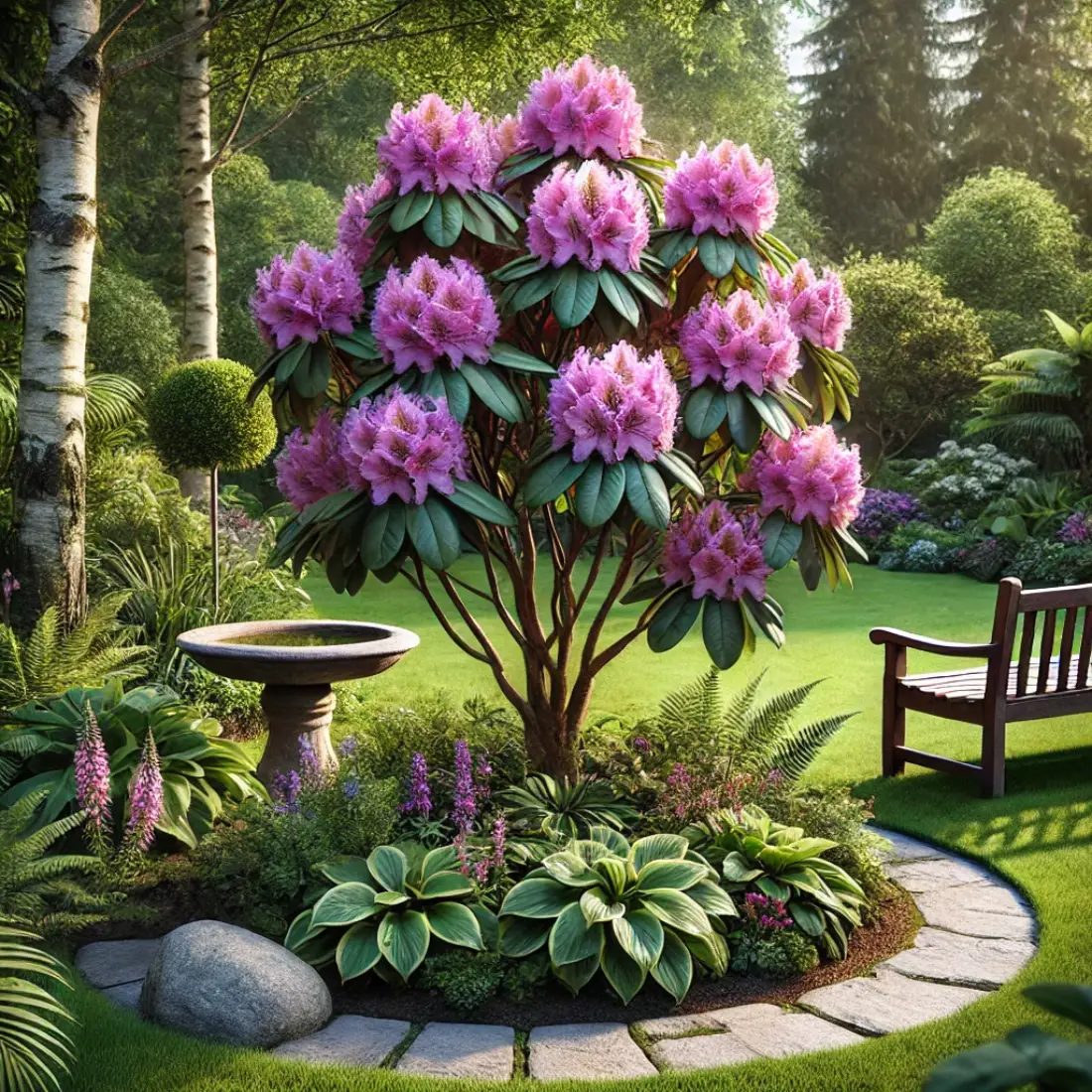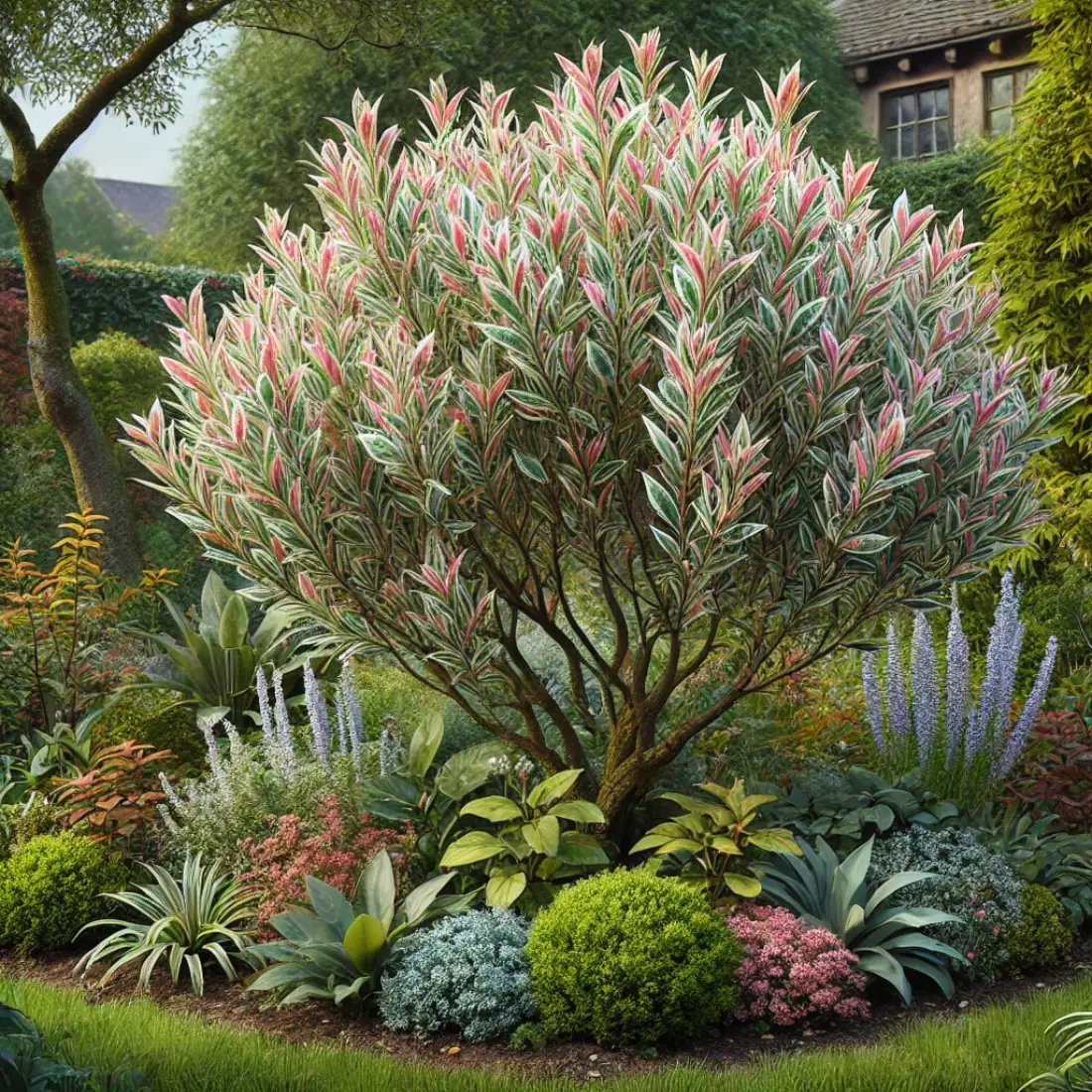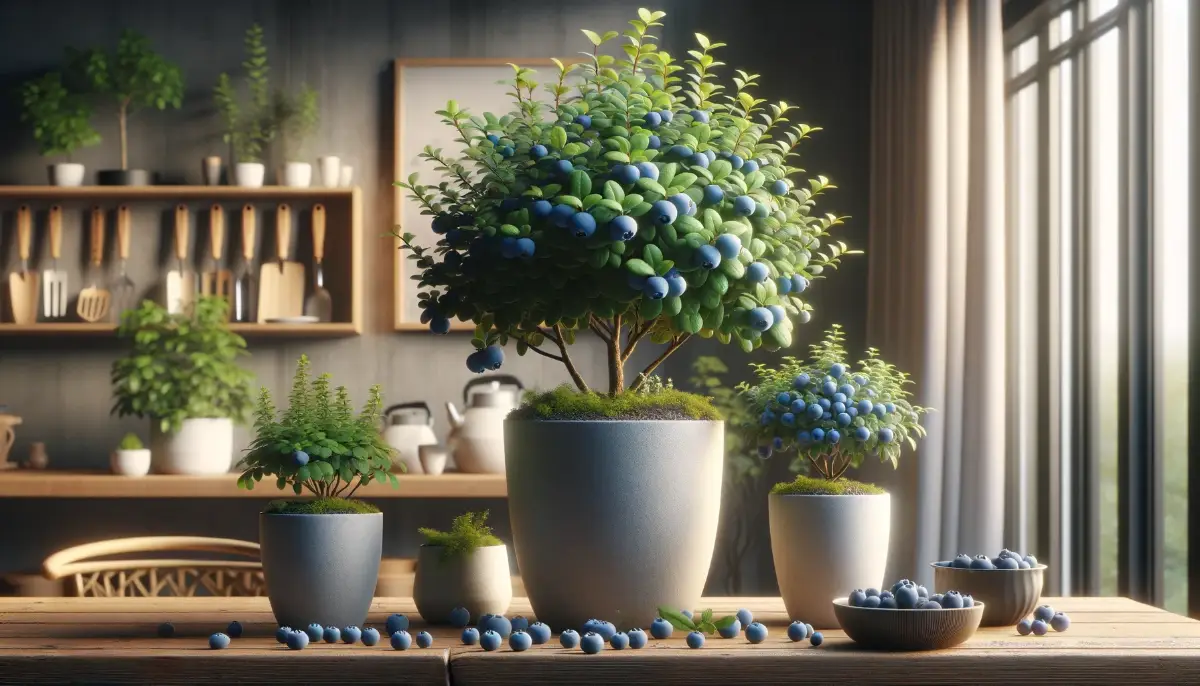Rhododendrons are celebrated for their vibrant, colorful blooms and lush evergreen foliage. Originating from the Himalayan region and Southeast Asia, these plants have become garden favorites worldwide.
These plants thrive in cool climates and partially shaded areas, ideally suited for woodland gardens. They require well-drained, acidic soil and regular watering. Rhododendrons are not just visually stunning; they also provide environmental benefits like attracting wildlife.
- Diverse Varieties: Rhododendrons come in over 1,000 species, offering a wide range of sizes and colors suitable for various landscapes.
- Ideal Growing Conditions: These plants thrive in cool climates and partially shaded areas, with well-drained, acidic soil being essential for their growth.
- Watering and Feeding: Regular watering and feeding are crucial. Rhododendrons benefit from consistent moisture and specific fertilizers.
- Pruning and Maintenance: Proper pruning encourages healthy growth and enhances the plant’s shape. It also helps manage dead or diseased branches.
- Disease Management: Recognizing and treating common pests and diseases can keep rhododendrons healthy and vibrant.
- Environmental Benefits: Beyond their beauty, rhododendrons attract wildlife and contribute to soil health, adding ecological value to your garden.
- Companion Planting: Selecting compatible plants can enhance the health and appearance of your rhododendrons, while avoiding incompatible species is crucial.
Types of Rhododendrons
They are broadly categorized into two main types: deciduous and evergreen.
Evergreen Rhododendrons maintain their leaves year-round, providing consistent greenery even in the winter months. Popular evergreen varieties include the Rhododendron ponticum, known for its large, purple flowers, and the Rhododendron catawbiense, which produces stunning clusters of pink to purple blooms.
These plants are often used as ornamental shrubs in gardens and parks due to their lush foliage and impressive flower displays.

Deciduous Rhododendrons, often referred to as azaleas, shed their leaves in the fall. Despite this seasonal change, they are highly valued for their vibrant and prolific blooms in the spring. Notable deciduous varieties include the Rhododendron luteum, which offers fragrant yellow flowers, and the Rhododendron schlippenbachii, renowned for its pink, funnel-shaped blooms.
These types are well-suited for adding a splash of color to garden borders and woodland settings.
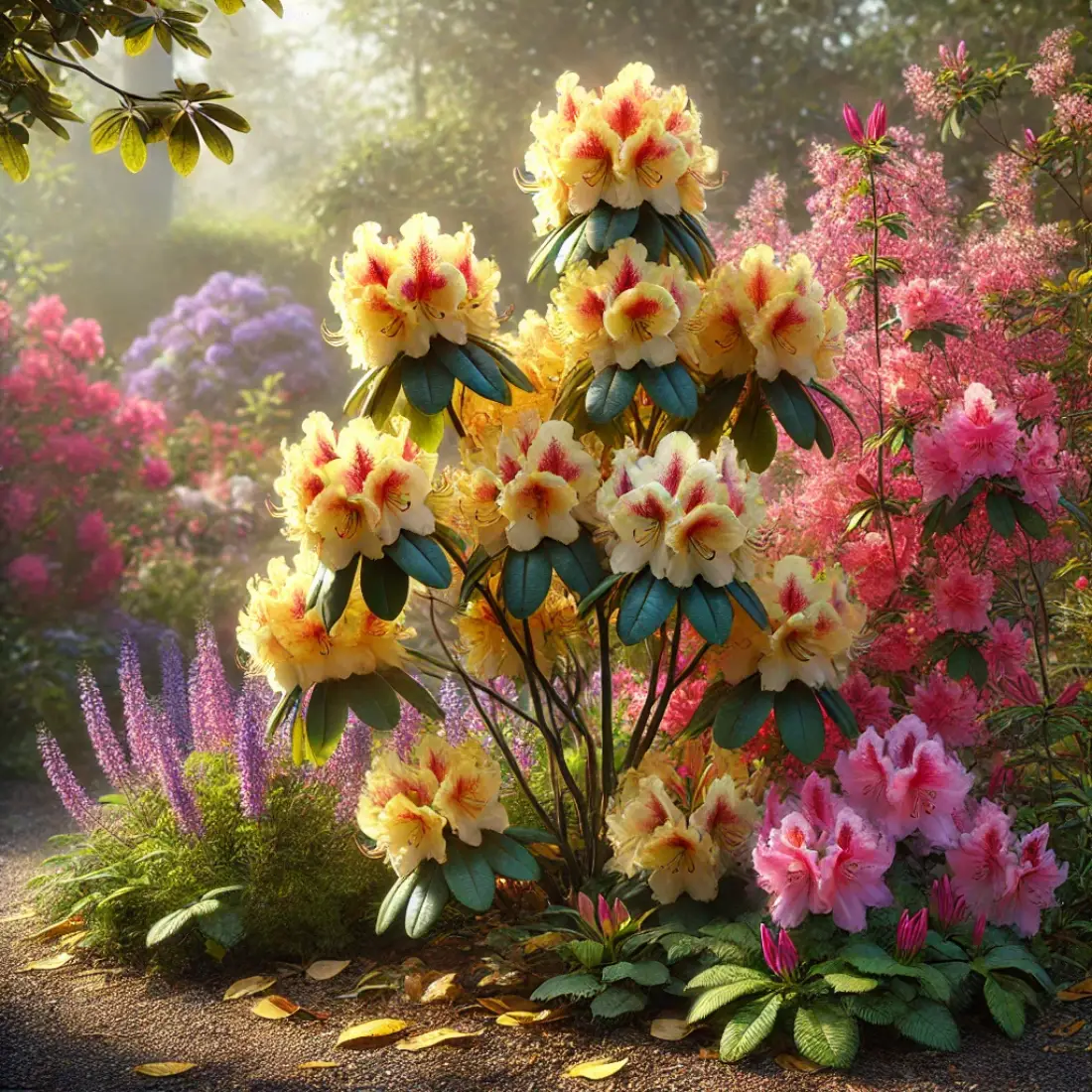
Hybrid Rhododendrons are also popular, bred to combine the best traits of different species. Hybrids like the Rhododendron ‘Nova Zembla’ and Rhododendron ‘PJM’ are known for their hardiness, disease resistance, and stunning floral displays in various colors.
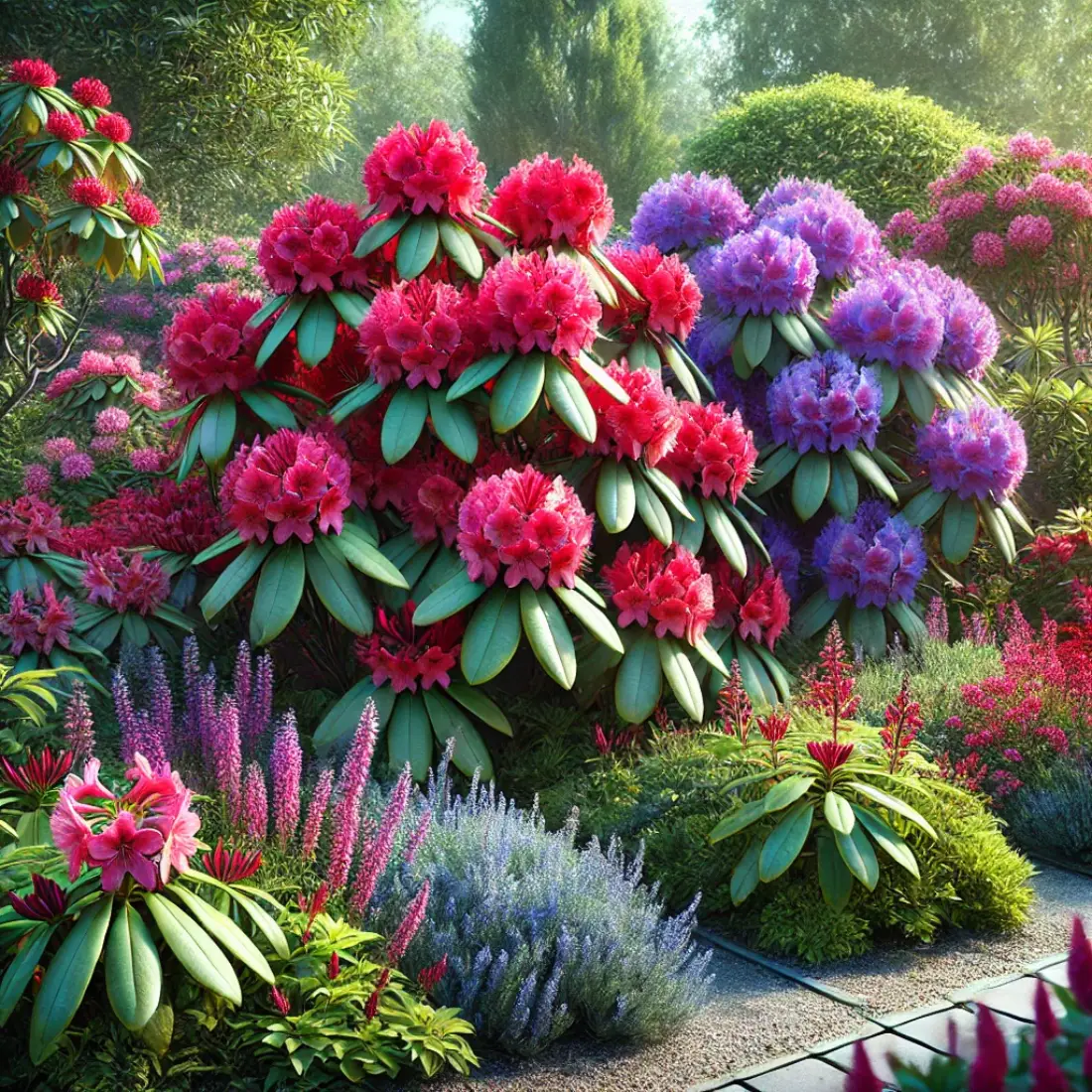
Preparing to Grow Rhododendrons
Choosing the Right Location
Selecting the ideal location is crucial for growing healthy rhododendrons. These plants thrive in cool climates with partial shade, mimicking their natural woodland habitat. Avoid planting rhododendrons in full sun or deep shade. Full sun can scorch their leaves, while deep shade can hinder flowering. Morning sun with afternoon shade is ideal.
Wind protection is also essential. Rhododendrons can be susceptible to damage from strong winds, which can dry out their leaves and cause physical harm. Planting them near a windbreak, such as a fence or a group of trees, can help protect them from harsh conditions.
Soil Preparation
Rhododendrons require well-drained, acidic soil with a pH between 4.5 and 6.0. Before planting, test your soil’s pH using a soil test kit. If the pH is too high, amend the soil with elemental sulfur or a soil acidifier to lower it. Organic matter, such as compost or peat moss, can improve soil structure and drainage, ensuring the roots have the right environment to thrive.
Proper drainage is critical to prevent root rot. If your garden soil is heavy clay or poorly drained, consider planting rhododendrons in raised beds or on slopes to enhance drainage. Incorporate coarse sand or perlite into the soil to further improve drainage.
Planting Rhododendrons
The best time to plant rhododendrons is either in early spring or early fall when the temperatures are mild. Avoid planting during extreme heat or cold to reduce stress on the plants.
Step-by-Step Planting Guide:
- Dig a hole: Make the hole twice as wide and as deep as the root ball.
- Amend the soil: Mix organic matter into the removed soil.
- Place the plant: Position the rhododendron in the hole so the top of the root ball is level with the ground surface.
- Backfill: Fill the hole with the amended soil, firming it gently around the roots.
- Water thoroughly: Water the plant well after planting to help settle the soil around the roots.
- Mulch: Apply a 2-3 inch layer of mulch around the base to retain moisture and regulate soil temperature.
Proper spacing is important to ensure good air circulation and prevent disease. Space rhododendrons at least 3-6 feet apart, depending on the mature size of the variety. Planting at the correct depth is also crucial. The root ball should be just at the soil surface, as planting too deep can cause the roots to suffocate.
Watering and Organic Feeding Rhododendrons
Watering Rhododendrons
Proper watering is crucial for the health of rhododendrons. These plants prefer consistently moist soil but are sensitive to overwatering, which can lead to root rot. Here are some key watering tips:
- Consistent Moisture: Rhododendrons need regular watering, especially during dry periods. The soil should be kept evenly moist but not waterlogged.
- Deep Watering: Water deeply to encourage deep root growth. This helps the plant withstand periods of drought. Watering at the base of the plant ensures the roots get the necessary moisture.
- Morning Watering: Water rhododendrons in the morning to allow the foliage to dry out by evening, reducing the risk of fungal diseases.
- Mulching: Apply a 2-3 inch layer of organic mulch, such as pine needles or bark, around the base of the plant. Mulch helps retain soil moisture and regulates soil temperature.
Organic Feeding Rhododendrons
Rhododendrons benefit from a balanced, organic feeding regimen to promote healthy growth and vibrant blooms. Organic fertilizers are gentle and improve soil health over time. Here’s how to feed your rhododendrons organically:
- Compost: Incorporate compost into the soil at planting time and as a top dressing in spring. Compost adds essential nutrients and improves soil structure.
- Fish Emulsion: Use fish emulsion, a liquid organic fertilizer, as a foliar feed or soil drench. It provides a quick nutrient boost and is high in nitrogen, promoting lush, green growth.
- Bone Meal: Apply bone meal around the base of the plant in early spring. Bone meal is rich in phosphorus, which supports root development and flowering.
- Coffee Grounds: Coffee grounds can be sprinkled around the base of the plant to provide a slow-release source of nitrogen. They also help acidify the soil.
- Organic Mulch: As the mulch breaks down, it adds organic matter to the soil, providing a slow, steady release of nutrients.
Caring for Rhododendrons
Pruning Rhododendrons
Pruning is essential for maintaining the health and appearance of rhododendrons. Proper pruning encourages new growth, improves air circulation, and removes dead or diseased branches.
Best Times to Prune:
- Early Spring: Before new growth starts, prune to shape the plant and remove any winter damage.
- After Blooming: Prune immediately after the flowering period to avoid cutting off next year’s flower buds.
Pruning Techniques:
- Deadheading: Remove spent flowers by cutting just above the first set of healthy leaves. This prevents seed formation and encourages more blooms.
- Thinning: Cut back crowded branches to improve light penetration and air circulation. This reduces the risk of disease.
- Shaping: Prune to maintain the desired shape and size. Cut just above a leaf node to encourage branching.
Use clean, sharp pruning shears to remove any dead or diseased wood. Make clean cuts to prevent the spread of disease.
Common Pests and Diseases
Rhododendrons can be susceptible to various pests and diseases. Early identification and treatment are crucial for keeping plants healthy.
Common Pests:
- Azalea Lace Bugs: These insects cause stippling on leaves. Treat with insecticidal soap or neem oil.
- Spider Mites: Look for webbing and tiny yellow spots on leaves. Use insecticidal soap.
- Root Weevils: These pests chew on leaves and roots. Use beneficial nematodes or organic insecticides to control them.
Common Diseases:
- Powdery Mildew: A white, powdery fungus on leaves. Treat with fungicides and improve air circulation.
- Phytophthora Root Rot: Causes wilting and root decay. Ensure good drainage and use fungicides if needed.
- Leaf Spot: Brown or black spots on leaves. Remove affected leaves and treat with organic fungicides.
Preventative Measures:
- Regular Monitoring: Check plants frequently for signs of pests or diseases.
- Proper Watering: Avoid overhead watering to reduce the risk of fungal diseases.
- Good Sanitation: Remove fallen leaves and debris around the plants to prevent disease spread.
Propagating Rhododendrons
Propagating rhododendrons can be a rewarding way to expand your garden. There are several methods to propagate these beautiful plants, each with its own steps and tips for success.
Methods:
- Seed Propagation: Collect seeds from mature rhododendron pods in late summer or fall. Sow the seeds in a mixture of peat and sand, keeping them moist and in a well-lit area until germination.
- Cuttings: Take semi-hardwood cuttings in late summer. Dip the cut end in rooting hormone and plant in a mix of peat and perlite. Keep the cuttings in a humid environment until roots develop.
- Layering: In early spring, bend a low-growing branch to the ground and cover a portion with soil, leaving the tip exposed. Roots will form at the buried section, and the new plant can be separated and transplanted the following year.
Tips for Successful Propagation:
- Ensure consistent moisture for seeds and cuttings.
- Maintain high humidity for cuttings using a plastic cover.
- Be patient, as propagation can take several months.
Companion Planting with Rhododendrons
Companion planting can enhance the growth and health of your rhododendrons. Selecting the right companion plants can provide mutual benefits and create a more attractive garden.
Best Companion Plants:
- Ferns: These shade-loving plants complement rhododendrons with their delicate foliage and similar growing conditions.
- Hostas: Their broad leaves provide ground cover and retain soil moisture, benefiting rhododendrons.
- Azaleas: Closely related to rhododendrons, they share similar care requirements and create a cohesive garden look.
Benefits of Companion Planting:
- Improved soil health: Certain plants, like clover, can fix nitrogen in the soil, providing essential nutrients.
- Enhanced pest control: Some companion plants, like marigolds, can repel pests that may harm rhododendrons.
- Better moisture retention: Ground cover plants help maintain soil moisture levels.
Avoiding Incompatible Plants:
- Trees with aggressive roots: Avoid planting near trees like maples or birches, which can compete for nutrients and water.
- Heavy feeders: Plants like roses or tomatoes may deplete soil nutrients quickly, leaving less for rhododendrons.
FAQs About Growing Rhododendrons
What is the best time of year to plant rhododendrons?
The best times to plant rhododendrons are early spring and early fall. These periods offer mild temperatures, which help reduce transplant shock and allow the plants to establish roots before extreme weather conditions set in.
How often should I water my rhododendrons?
Water rhododendrons consistently to keep the soil evenly moist. Typically, they need about 1 inch of water per week, more during dry spells. Deep watering is best to encourage deep root growth.
How can I improve the soil for rhododendrons?
Rhododendrons prefer well-drained, acidic soil with a pH of 4.5 to 6.0. To improve the soil, incorporate organic matter such as compost or peat moss and amend the soil with elemental sulfur if necessary to lower the pH.
What are the signs of rhododendron disease?
Common signs of disease include yellowing leaves, leaf spots, wilting, and stunted growth. Powdery mildew appears as a white coating on leaves, while root rot causes wilting and brown, mushy roots.
How do I prune rhododendrons for optimal growth?
Prune rhododendrons after they finish blooming in late spring. Remove spent flowers, dead or diseased branches, and thin out crowded areas to improve air circulation and light penetration.
Can rhododendrons grow in full sun?
Rhododendrons prefer partial shade. While some varieties can tolerate full sun, excessive sunlight can scorch their leaves and reduce flowering. Morning sun and afternoon shade are ideal.
What pests commonly affect rhododendrons?
Common pests include azalea lace bugs, spider mites, and root weevils. Signs of infestation include stippling on leaves, webbing, and chewed leaves. Treat with insecticidal soap or neem oil as needed.
How do I fertilize rhododendrons organically?
Use organic fertilizers like compost, fish emulsion, and bone meal. Apply compost at planting and as a top dressing in spring. Fish emulsion can be used as a foliar feed, and bone meal is great for promoting root development.
Are there any specific companion plants for rhododendrons?
Yes, ferns, hostas, and azaleas are excellent companion plants for rhododendrons. They share similar growing conditions and enhance the garden’s overall health and appearance.
How can I propagate rhododendrons at home?
You can propagate rhododendrons through seed, cuttings, or layering. Collect seeds in late summer, take semi-hardwood cuttings in late summer, or layer a low branch in early spring for new plant growth.

